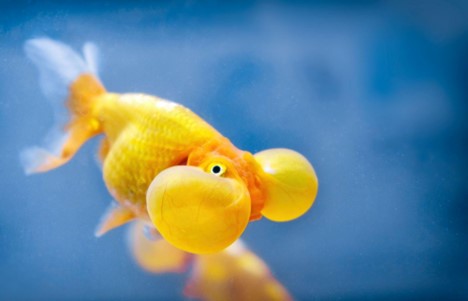Bubble Eye
The Bubble Eye Goldfish is a fascinating breed that instantly draws attention with its unique and delicate features. Due to these prominent eye sacs, the Bubble Eye Goldfish is considered one of the more delicate varieties of goldfish. The sacs are prone to injury, and thus, they require an environment free from sharp objects and abrasive decorations. This sensitivity necessitates a carefully curated tank setting, emphasizing safety and gentleness. Apart from their eye-catching sacs, these goldfish have a streamlined body and lack a dorsal fin, contributing to their unique silhouette. Their movements are often described as gentle and somewhat slow, aligning with their fragile nature. As a breed, the Bubble Eye Goldfish epitomizes the blend of vulnerability and beauty, requiring attentive care but rewarding aquarists with a truly extraordinary aquatic spectacle
Basic Information
Identification & Characteristics
Identification
This breed is most notable for its large, fluid-filled sacs under its eyes, which give it a distinct, almost otherworldly appearance. These sacs, or "bubbles," wobble gracefully as the fish moves, creating a mesmerizing visual effect
Sexual Dimorphism
Females have rounder, thicker bodies and a rounder vent, while males are slimmer and have a more oval vent. Males often develop small white spots called tubercles on their gill covers and fins during breeding, and their pectoral fins are longer and pointier compared to the shorter, rounder fins of females.
Behaviour Details
Living in small groups , naturally found at mid-depth and near the bottom.
Water Parameters
Reproduction
Goldfish exhibit a specific broadcast spawning pattern triggered primarily by environmental changes that mimic spring. The process involves distinct courtship behaviors, the external release of thousands of adhesive eggs and sperm, and a high risk of the eggs being eaten by the parents
Distribution & Origin
Native Origin
China
World Distribution
Destributed Most part of the Asia, America , Europe and Australian continents
Photo Gallery
